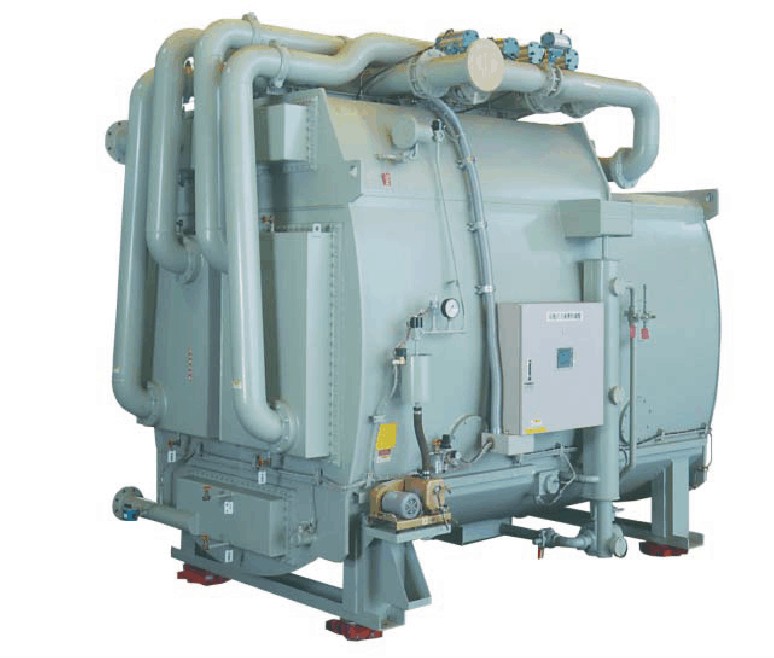
Chillers are widely utilized throughout industry for process cooling applications and also in the commercial arena for comfort air conditioning. In these times of increasing energy costs and environment awareness, it’s becoming necessary to dramatically minimize energy wastage and where ever possible recovery valuable resources. Power generation is a notorious waster of energy. In your typical coal fired power station about half of the input energy is not utilized. Instead it’s released into the atmosphere, most commonly in the form of steam plumes.
Typically, for small private power producers, it’s either not viable or economically prudent to not include some means of waste heat recovery. Absorption chillers have been used for many years to utilize low grade and waste heat from power generators. Their use has been particularly beneficial where process cooling could also be locally employed. Whilst the basic absorption chiller concept is admirable from an environment protection perspective, unfortunately, absorption chillers have high maintenance costs, due to the fact that they use lithium bromide (LiBr) as their refrigerant. They are therefore economically disadvantaged and as such are not embraced by the large power users that produce the most GHG.
Now that’s all changing since the advent of the aDsorption chiller. Now, efficient energy conservation can be achieved by utilizing waste heat to drive an Adsorption Chiller, which can cost effectively replace any absorption chiller. Waste heat from systems such as diesel engines, gas engines, gas turbines, fuelcells, coal, biomass, & MSW fired boilers can all be used in conjunction with adsorption chillers to achieves co & tri-generation. Using the waste heat from various processes including: food (poultry, dairy products, juice, and breweries), chemical, plastic, rubber, paper and cement can enhance the heat balance of the process.
Another source of waste heat are steam boilers, that are used year round in such applications as hospitals and hotels, which can use their waste heat in the summer to cool their facilities. Additionally, the adsorption chiller can also tap into natures own waste heat such as geothermal wells and solar energy using solar water heaters.
The adsorption chiller is highly reliable and safe with low operating cost due its simplicity of operation. The adsorption chiller does not contain any Li-Br or other chemical refrigerant whichmeans no crystallization, no corrosion no chemical testing or hazardous leaks. The adsorption chiller also does not have high voltage motors or large compressors. The control system is self contained and trouble-free. No external temperature control valves are required to protect the chiller for capacity control. The adsorption chiller contains only water as the refrigerant and a proprietary, permanent silica gel which lasts 30 years as an adsorbent. The evaporator section cools the chilled water by the refrigerant (water) being evaporated by adsorption into the silica gel in one of two adsorbent chambers.
It can produce chilled water temperatures of less than 4°C with hot water temperatures ranging from 90°C to as low as 50°C. The hot water regenerates the silica gel in the second of the two adsorbent chambers. The water vapor released from the silica gel by the hot water is condensed in the condenser section which is cooled by a cooling water, such as, from a cooling tower.
line space
Key Benefits of ADsorption Chiller are;
line space
Optimized to use;
line space
Environment Friendly;
line space
Some Applications;
line space
Product brochures: